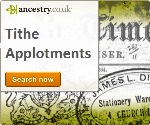- Home ›
- Land & Property records ›
- TABs
Tithe Applotment Books
Tithe Applotment Books (TABs) date from the decades prior to the Great Hunger and the mass emigration that resulted from it. As such, they predate the better known, and more comprehensive, Griffiths Valuation, by at least a couple of decades.
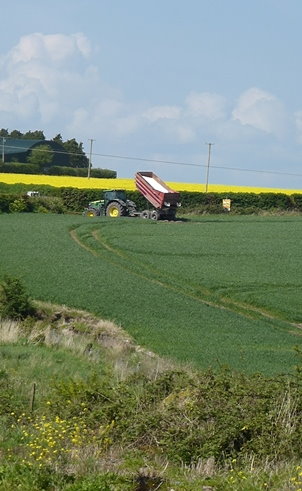 Farm fields in County Carlow in late April
Farm fields in County Carlow in late AprilThey record the amount of Irish tithe - a tax equating to one-tenth of production - due from each occupier of land, regardless of his/her religion, to support the clergy of the (Protestant) Church of Ireland.
Originally, the tax was paid by the farmer in produce. But in 1823 the Tithe Composition Act was introduced and allowed tithes to be paid in cash, a practice that had already become quite widespread.
The Act also launched the Tithe Applotment Survey, a valuation of the entire island. Carried out civil parish by civil parish, the objective of the survey was to determine how much tithe each occupier of land ought to pay. The records contained in the Tithe Applotment Books are arranged by townland and list the names of each land occupier, the size and quality of their land, and the tithe deemed payable.
The tithe was calculated on the average price of oats and wheat between 1816 and 1823, while the quality ie productivity of the land was graded between 1 and 4, from very good and very poor respectively.
Converting the values into modern currencies is pretty much meaningless but you can get an idea of how well off or how badly off your ancestors were by simply comparing them to others in their townland.
You may come across the addition of 'and partners' or 'and Co' beside some entries in the Tithe Applotment Books; this annotation does not suggest the formation of a business rather that the land was held by a number of tenants 'in common'.
They record the amount of Irish tithe - a tax equating to one-tenth of production - due from each occupier of land, regardless of his/her religion, to support the clergy of the (Protestant) Church of Ireland.
Originally, the tax was paid by the farmer in produce. But in 1823 the Tithe Composition Act was introduced and allowed tithes to be paid in cash, a practice that had already become quite widespread.
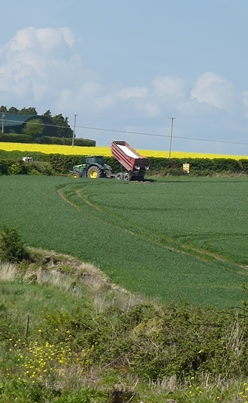
The Act also launched the Tithe Applotment Survey, a valuation of the entire island. Carried out civil parish by civil parish, the objective of the survey was to determine how much tithe each occupier of land ought to pay. The records contained in the Tithe Applotment Books are arranged by townland and list the names of each land occupier, the size and quality of their land, and the tithe deemed payable.
The tithe was calculated on the average price of oats and wheat between 1816 and 1823, while the quality ie productivity of the land was graded between 1 and 4, from very good and very poor respectively.
Converting the values into modern currencies is pretty much meaningless but you can get an idea of how well off or how badly off your ancestors were by simply comparing them to others in their townland.
You may come across the addition of 'and partners' or 'and Co' beside some entries in the Tithe Applotment Books; this annotation does not suggest the formation of a business rather that the land was held by a number of tenants 'in common'.
Tithe Applotment Books - their value to Irish family historians
The Tithe Applotment Books record the occupiers of tithe-eligible land, not householders. They are not population censuses.
Because the tithe was payable only by those who worked on agricultural land, you may not find your ancestors included.
What the books contain
Tithe Applotment Books are arranged by parish and contain the following information:
- Land occupier's name
- Townland name
- Area of landholding in acres
- Land assessment grade 1-4
- Calculation of tithe amount
Those labourers who worked on agricultural land owned by the Church were exempt. So, too, were those labourers who did not rent land, and all those who lived and worked in urban areas.
Even so, the books represent the earliest records for the poor in Ireland, a group for whom very few other genealogical records survive from this period.
In fact, if your ancestors lived in one of the rural parishes for which no pre-1850 church registers exist, Tithe Applotment Books may also be the only documented records of their lives.
Those labourers who worked on agricultural land owned by the Church were exempt. So, too, were those labourers who did not rent land, and all those who lived and worked in urban areas.
WWhat the books contain
Tithe Applotment Books are arranged by parish and contain the following information:
Land occupier's name
Townland name
Area of landholding in acres
Land assessment grade 1-4
Calculation of tithe amount
Even so, the books represent the earliest records for the poor in Ireland, a group for whom very few other genealogical records survive from this period.
In fact, if your ancestors lived in one of the rural parishes for which no pre-1850 church registers exist, Tithe Applotment Books may also be the only records of their lives available.
Where to view the Tithe Applotment Books
Republic of Ireland TABs
For records covering the 26 counties that now make up the Republic of Ireland, the Tithe Applotment Books can be viewed on the National Archives of Ireland's free, dedicated Genealogy website here.
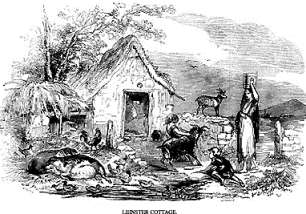
While the database was enthusiastically received when it first went online in 2012, researchers soon discovered that it has a number of inaccuracies that make searching tiresome and frustrating. Most of its failings are due to mis-transcribed names of townlands and surnames, and a lack of familiarity with Ireland's geography and parish system. Add in the website's lack of surname or townland spelling variant function, and it is, sad to say, bordering on unfit for purpose. You might be lucky to find your ancestors relatively easily. You might not.

While the database was enthusiastically received when it first went online in 2012, researchers soon discovered that it has a number of inaccuracies that make searching tiresome and frustrating.
Most of its failings are due to mis-transcribed names of townlands and surnames, and a lack of familiarity with Ireland's geography and parish system. Add in the website's lack of surname or townland spelling variant function, and it is, sad to say, bordering on unfit for purpose. You might be lucky to find your ancestors relatively easily. You might not.
It wasn't until the 1840s that the names of Irish townlands started to become standardised. In some areas, the townland name used in the tithe books has disappeared, been changed or simply spelled quite differently. Or it may have been absorbed into an adjoining parish.
A workaround is to locate the general area in the later Griffith's Valuation collection and see if you can identify the 'lost' townland by a pattern of surnames in the Tithe Applotment Books.
It wasn't until the 1840s that the names of Irish townlands started to become standardised. In some areas, the townland name used in the tithe books has disappeared, been changed or simply spelled quite differently. Or it may have been absorbed into an adjoining parish. A workaround is to locate the area in the later Griffith's Valuation collection and see if you can identify the 'lost' townland by a pattern of surnames in the Tithe Applotment Books.
Northern Ireland TABs
Other than a few parishes that straddle the border, the TAB collection on the NAI website does not cover the six counties now in Northern Ireland.
However, in November 2019, the Public Record Office of Northern Ireland (PRONI) launched its Tithe Applotment Books collection online via its free e-catalogue. While not indexed by named householder, downloadable scans of the TABs, arranged by parish and townland, can be downloaded.
To access the files from a PC, go to PRONI's e-catalogue page. Click the bright green 'Search the e-catalogue' button. On the next page, click Browse in the top right of the page, just below the PRONI logo. Then enter FIN/5 in the search box.
From the landing page, FIN/5/A is probably the best option for most researchers, but look around the other 22 options, too, in case there's a file dedicated to your parish of interest. From FIN/5/A you'll find you have the option of 317 'digital view' files, arranged alphabetically by parish.
Use the Previous and Next buttons below the table to select those you want to view.
The only pay-to-view collection I'm aware of is held on the Ancestry database. It's an index - no images - of about one million entries covering most, but not all, of the island eg it has no records for County Tyrone. The information it provides is limited to name, townland, parish, county and year of enumeration.
The Tithe War, 1830-1838
Quite apart from the obvious dislike for paying hard-earned money to a minority church, the tithe was hated among Catholics because the poor (as ever) bore the brunt. Indeed, some wealthy landowners didn't pay anything while some tenants had to pay even though they farmed little more than a tiny potato patch. By the end of the 1820s, anger about these inequalities had reached a new level.
Although history records the subsequent protests as the Tithe War, it was really only a rural campaign against the hated system.
Protests had been made before. Groups known as the Whiteboys, the Oak Boys (1763) and the Hearts of Steel (1770s) had come and gone, but after the success of the campaign for Catholic emancipation, which was granted in 1829, there was a more widespread belief that protests could achieve desired results.
A major distinction of the Tithe War was that this campaign had the support of larger farmers and the Catholic clergy.
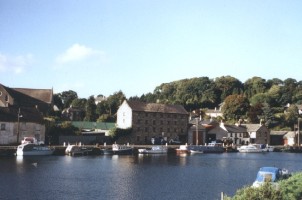 Graiguenamanagh on the River Barrow was the scene of violent protests in 1830
Graiguenamanagh on the River Barrow was the scene of violent protests in 1830Following a period of passive resistance, the tithe issue came to a head in 1830 after a confrontation in Graiguenamanagh in County Kilkenny when the authorities turned up with the police and yeomanry to collect the taxes which a group of Catholic farmers had withheld.
This triggered widespread support for the anti-tithe campaign, especially among the Catholic clergy, and protests spread throughout Leinster and Munster. Although these were meant to be peaceful, there were fatalities.
In June 1831, the yeomanry shot 14 protestors at Newtownbarry, County Wexford. Six months later, protesters killed an official and a dozen policemen in Carrickshock, County Kilkenny.
Apart from these flashes of violence, the campaign was mainly about non-payment. In some areas the amount of tithe collected was more than halved.
Eventually, the authorities introduced The Tithe Rent Charge Act of 1838, which converted the tithe into a tax payable by landlords. What this actually meant was that the landlords included the tax in the tenant's rent. This wasn't welcome but it was certainly less contentious.
The Irish tithe was finally abolished in 1869 when the Church of Ireland lost its status as Established Church.
Related Pages
► Move on a few decades: from Tithe Applotment Books to Griffith's Valuation
► See full page menu for Land and Property Records
The Whiteboys
So called for their coarse
white linen overshirts or waistcoats and white veils hung from their
hats, the Whiteboys represented an agrarian protest movement that
originated in co. Tipperary in 1761 and then spread to the neighbouring
counties of Waterford, Cork and Limerick.
The Whiteboys were passionately opposed to payment of the tithe and they demonstrated this by damaging pastureland, farmland boundaries and streams and ditches. In the 1760s Whiteboy disturbances, violence was more a threat than a reality, but during the following decade, when the protest spread into Kilkenny, Carlow, Laois and Kildare, some nasty punishments were meted out by the insurgents.
A further wave of Whiteboy protest occurred in the mid-1780s but this group is more correctly recalled as the Rightboys, after its fictitious leader 'Captain Right'. As with the earlier protesters, the Rightboys included cottiers and labourers, but their ranks also included some more affluent individuals and Protestants. This stage of the movement was much more organised and disciplined.
During the Whiteboy and Rightboy demonstrations, violence against people was not unheard of and a variety of particularly nasty punishments were meted out to some tithe-collectors. A handful of deaths also occurred.
